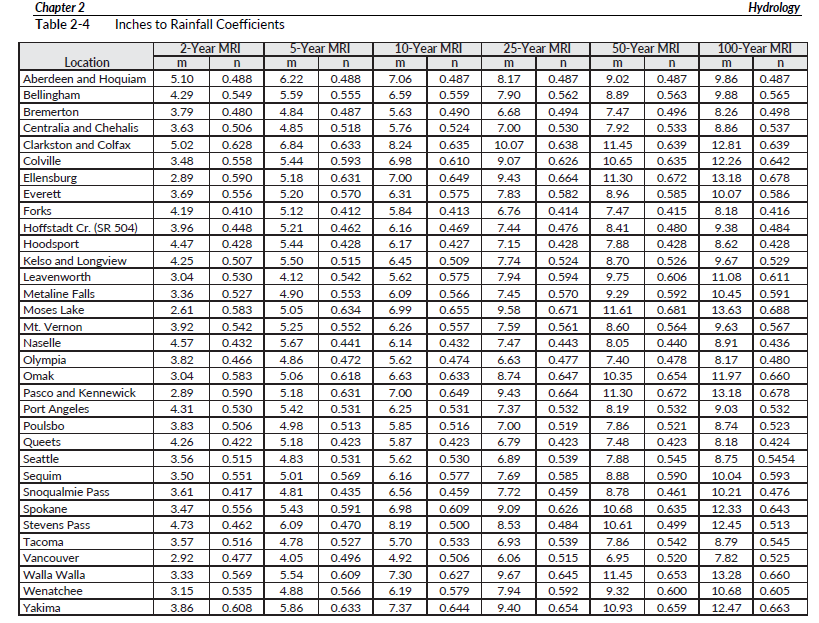After the appropriate storm frequency for the design has been determined (see Chapter 1) and the time of concentration has been calculated, the rainfall intensity can be calculated. Rainfall intensity is the average of the most intense period enveloped by the time of concentration and is not instantaneous rainfall. Rainfall intensity, duration, and frequency (IDF) curves can be used to estimate rainfall intensity. Regional IDF curves are available from the National Oceanic and Atmospheric Administration (NOAA). Curves for Washington State can be found on NOAA’s Precipitation Frequency Data Server.
PEOs shall never use a time of concentration that is less than 5 minutes for intensity calculations, even when the calculated time of concentration is less than 5 minutes. The 5-minute limit is based on two ideas:
• Shorter times give unrealistic intensities. Many intensity-duration-frequency curves are constructed from curve-smoothing equations and not based on actual data collected at intervals shorter than 15 to 30 minutes. Making the curves shorter involves extrapolation, which is not reliable.
• Rainfall takes time to generate runoff within a defined basin, thus it would not be realistic to have less than 5 minutes for a time of concentration.
Rainfall intensity is the average of the most intense period enveloped by the time of concentration and is not instantaneous rainfall. Equation 2-7 calculates rainfall intensity.

The coefficients (m and n) have been determined for all major cities for the 2-, 5-, 10-, 25-, 50-, and 100-year MRI. The coefficients listed in Table 2-4 are accurate from 5-minute durations to 1,440-minute durations (24 hours).
The PEO, with RHE assistance, shall interpolate between the two or three nearest cities listed in Table 2-4 when working on a project in an unlisted location. Consult with the State Hydraulics Office if help is needed with interpolating which values to use.
